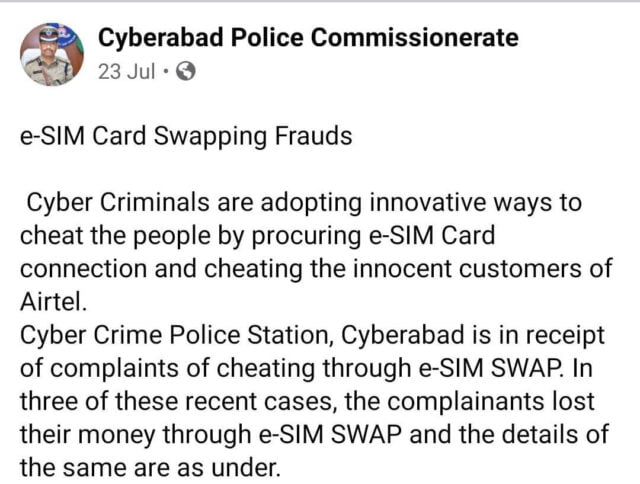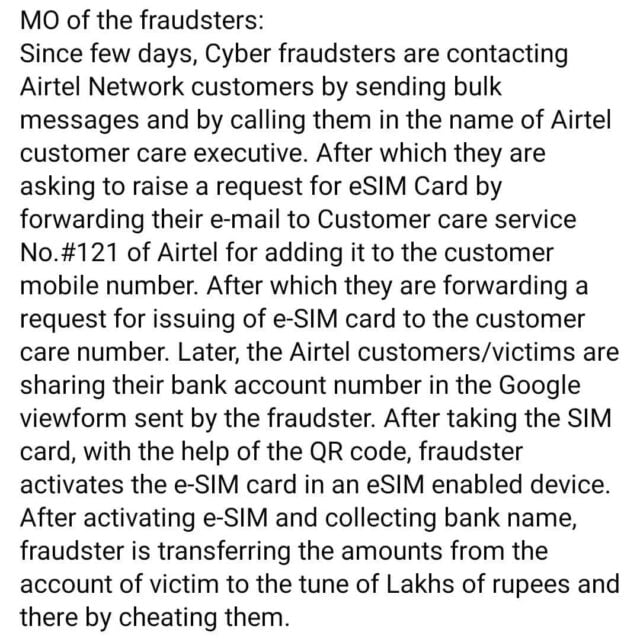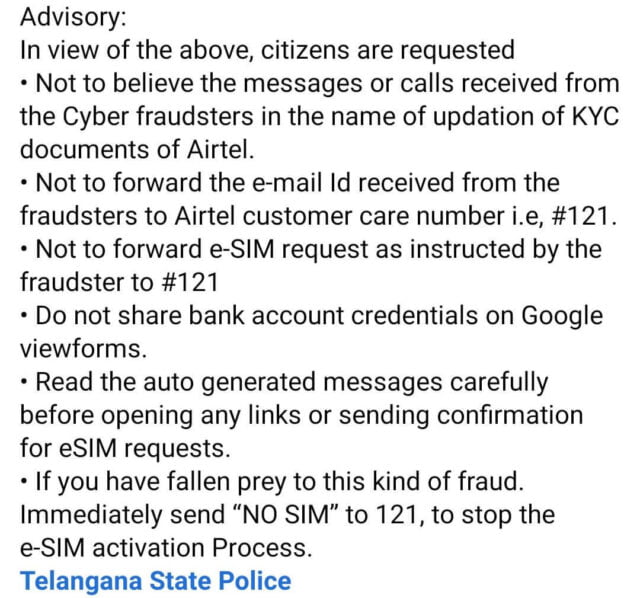Disclaimer: Originally published in August 2020. It is being republished since it still remains an interesting topic till today.
Waking up to news about cybercrimes and frauds has become a routine for most of us. Despite numerous advisories and awareness sessions on cybersecurity, people fall prey to frauds. e-SIM swapping scam, reported in July, is the recent star of the show.
What Are e-SIM Cards?
A SIM stands for “Subscriber Identity Module”. It authenticates your identity to your network provider. As the name suggests, e-SIM cards do away with the physical cards because the SIM technology is built-in directly in your mobile devices.
An electronic or embedded SIM card (e-SIM) is a small chip that serves the purpose of authenticating your identity to your telecom service provider. e-SIM cards are preferred over the traditional ones because they offer an easier protocol of switching network providers.
e-SIM Swapping Scam
Last month, Cyberabad registered a few cases regarding e-SIM fraud. Allegedly, the fraudsters duped people into e-SIM activation and siphoned off the money in their bank accounts.

Let’s understand the modus operandi of these fraudsters:
- These criminals call the network users in the name of customer care executives and ask them to request for e-SIM activation.
- They deceive the user into forwarding an e-mail sent by the service provider on their registered e-mail addresses.
Read Also: Why Making ‘Boycott #TheKargilGirl’ Trend On Twitter Is Not Enough To Kill Nepotism In Bollywood?
- Following which, the victims are made to fill in their details, including bank details, in a google form. That is how the criminals get access to the bank accounts of these users.
- The fraudsters then use an e-SIM enabled device to activate the victim’s SIM at their end. Subsequently, the user’s original SIM gets deactivated and he/she loses access to their number and apparently, the money in their bank accounts.

As of now, all of the reported cases relate to Bharti Airtel.
Do’s And Don’ts To Protect Yourself Against Such Scams
Maharashtra Cyber, the cybercrime and cybersecurity department of the state police, released an advisory stating some do’s and don’ts that one needs to follow in order to protect themselves from these frauds.

- KYC is done on a face-to-face basis only. So, one should avoid all texts and calls requesting to update KYC documents.
- One should not forward e-mails or e-SIM activation requests on the directions of the fraudsters.
- Never share your bank details on Google Forms.
- Avoid sharing your contact information on public platforms.
In case you have fallen prey to such a scam, you should immediately send “NO SIM” to 121 (Customer Care Number of Bharti Airtel). This will stop the e-SIM initiation process.
It is extremely important to stay on the lookout for such scams and fraud activities.
Better be safe than sorry!
Image Sources: Google Images, Facebook
Sources: Indian Express, Hindustan Times, Times Of India
Find the Blogger: @RitikaaNijhawan
This post is tagged under: cybersecurity, cybercrime, e-SIM, SIM cards, Maharashtra Police, Maharashtra Cyber, Fraud, KYC, e-mails, phishing e-mails, spamming, Airtel, Protection against cybercrime, eSIM carriers, eSIM Card, eSIM Phones, Verizon eSIM, at&t eSIM, eSIM, t Mobile eSIM, sprint eSIM, Vodafone eSIM, iPhone dual SIM, Airtel eSIM, what is eSIM, iPhone eSIM
Other Recommendations:
Work From Home’s Cybersecurity Scares One Should Be Careful Of




































